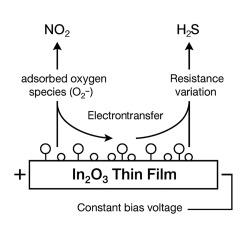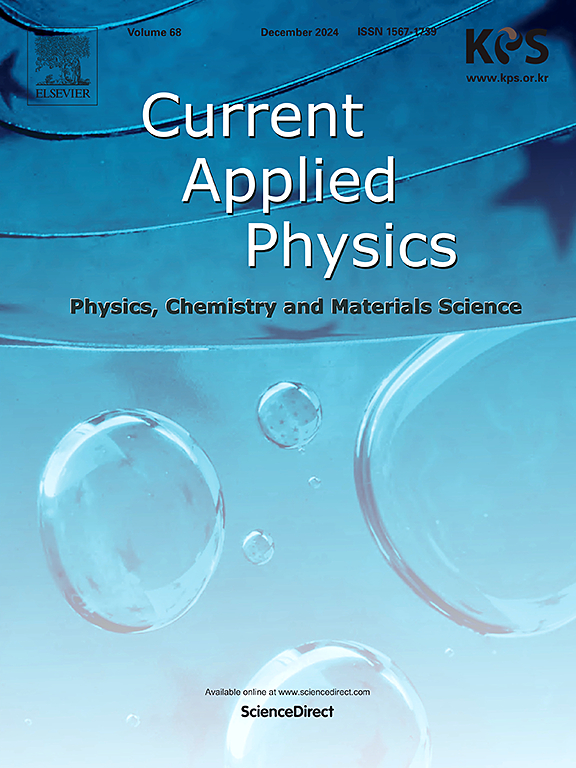Optical and structural properties of indium oxide prepared by spray pyrolysis as a NO2 and H2S gas sensor
IF 3.1
4区 物理与天体物理
Q3 MATERIALS SCIENCE, MULTIDISCIPLINARY
引用次数: 0
Abstract
Spray pyrolysis was employed to synthesize indium oxide nanostructures. The material was characterized using energy-dispersive X-ray spectroscopy (EDX), field emission scanning electron microscopy (FESEM), and X-ray diffraction (XRD). Thin films of indium oxide (In2O3) were produced by spray pyrolysis for gas sensing applications. The films were analyzed by XRD, FESEM, EDX, and UV–Vis spectroscopy. XRD analysis revealed a cubic polycrystalline structure with crystallite sizes ranging from 12 to 17 nm, while FESEM showed grass-like nanostructures with diameters between 40 and 70 nm. UV–Vis spectroscopy indicated an optical band gap of ∼3.27 eV. The gas sensor exhibited very high sensitivity to NO2 and H2S gases, with maximum sensitivities of 69.9 % and 32.25 %, respectively, at 300 °C. The device also demonstrated rapid response and recovery times, making it an ideal candidate for environmental gas detection.

喷雾热解制备氧化铟作为NO2和H2S气体传感器的光学和结构性质
采用喷雾热解法合成氧化铟纳米结构。利用能量色散x射线能谱(EDX)、场发射扫描电镜(FESEM)和x射线衍射(XRD)对材料进行了表征。采用喷雾热解法制备氧化铟(In2O3)薄膜,用于气敏应用。采用XRD、FESEM、EDX和UV-Vis光谱对膜进行了分析。XRD分析显示其为立方多晶结构,晶粒尺寸在12 ~ 17 nm之间,FESEM显示为直径在40 ~ 70 nm之间的草状纳米结构。紫外可见光谱显示光学带隙为~ 3.27 eV。该气体传感器对NO2和H2S气体具有很高的灵敏度,在300℃时的最大灵敏度分别为69.9%和32.25%。该设备还具有快速响应和恢复时间,使其成为环境气体检测的理想候选者。
本文章由计算机程序翻译,如有差异,请以英文原文为准。
求助全文
约1分钟内获得全文
求助全文
来源期刊

Current Applied Physics
物理-材料科学:综合
CiteScore
4.80
自引率
0.00%
发文量
213
审稿时长
33 days
期刊介绍:
Current Applied Physics (Curr. Appl. Phys.) is a monthly published international journal covering all the fields of applied science investigating the physics of the advanced materials for future applications.
Other areas covered: Experimental and theoretical aspects of advanced materials and devices dealing with synthesis or structural chemistry, physical and electronic properties, photonics, engineering applications, and uniquely pertinent measurement or analytical techniques.
Current Applied Physics, published since 2001, covers physics, chemistry and materials science, including bio-materials, with their engineering aspects. It is a truly interdisciplinary journal opening a forum for scientists of all related fields, a unique point of the journal discriminating it from other worldwide and/or Pacific Rim applied physics journals.
Regular research papers, letters and review articles with contents meeting the scope of the journal will be considered for publication after peer review.
The Journal is owned by the Korean Physical Society.
 求助内容:
求助内容: 应助结果提醒方式:
应助结果提醒方式:


